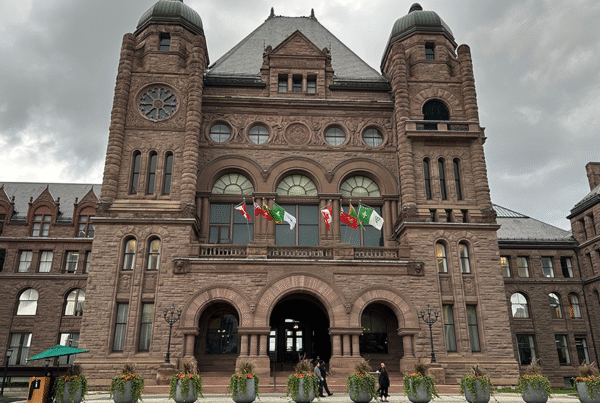
TORONTO — Several construction industry stakeholders largely praised Ontario’s recent Fall Economic Update, stating it continues to ensure the province remains competitive and productive in uncertain times.
Residential and Civil Construction Alliance of Ontario (RCCAO) members were on hand at Queen’s Park as Minister of Finance Peter Bethlenfalvy delivered his presentation in the Legislature.
“RCCAO commends the Government of Ontario for staying the course on its economic priorities by continuing to invest in critical infrastructure, housing and the skilled trades,” said Nadia Todorova, executive director of RCCAO in a statement. “Advancing transformational projects such as the Ring of Fire, removing the provincial portion of the HST on new homes for first-time homebuyers, and ensuring Ontario has the skilled workforce needed for the future are crucial steps toward maintaining the province’s competitiveness and safeguarding it against economic uncertainty.”
The RCCAO touted the accelerated completion of the Gardiner Expressway as a model for innovative procurement and project management as well as the moves that have been made to implement the Bradford Bypass and Highway 413 projects.
The Progressive Contractors Association of Canada (PCA) was also optimistic about the statement but emphasized the importance of a competitive industry.
“We fully support the government’s goal of making Ontario the most competitive place to do business and invest,” said Karen Renkema, vice-president Ontario with PCA. “We are confident that can be achieved by supporting competition in all economic sectors, including construction. Investors will build where there is a productive, innovative and competitive construction industry.”
The Provincial Building and Construction Trades Council of Ontario emphasized the importance of ensuring projects are carried out by Ontario-based companies.
“Ensuring that the province’s large-scale procurement and project investments focus on Ontario-based companies and construction workers is essential to safeguarding jobs and apprenticeships here at home,” said Marc Arsenault, business manager with the council.
“Our Council looks forward to working closely with the government to translate these commitments into real, onsite jobs for Ontario workers and to ensure that the pipelines of apprenticeship, journeyperson hiring and project participation are fully leveraged.”
The government projected in its spring budget that this year’s deficit would be $14.6 billion, but Ontario now expects to end the year $13.5 billion in the red.
The fiscal update contains few new investments, though the province is enhancing and expanding a manufacturing investment tax credit and adding $100 million to a fund that helps small- and medium-sized businesses diversify into new markets.
The remaining $4 billion from a $5-billion Protecting Ontario Account the government established this year to support sectors affected by U.S. tariffs has not yet been allocated, but the government said it is working on the next funding streams.
The update also revised housing projections for new home construction. In the spring budget, the province expected to see 71,800 homes built this year — already far off the pace needed to reach 1.5 million, but now it projects an even lower 64,300.







